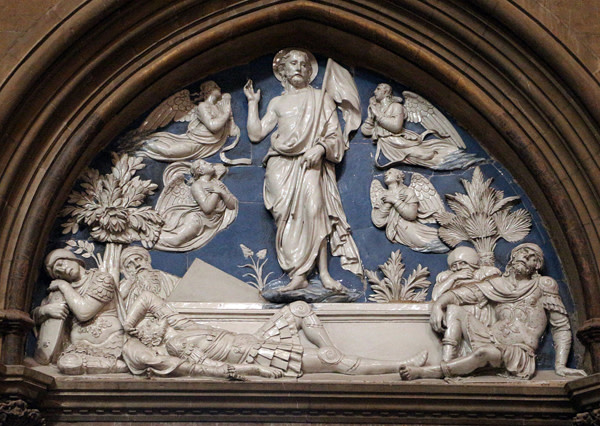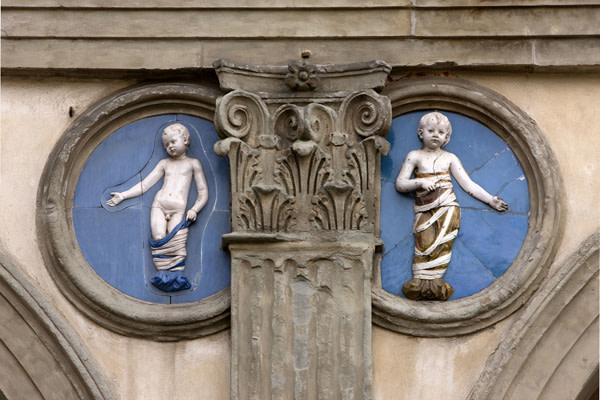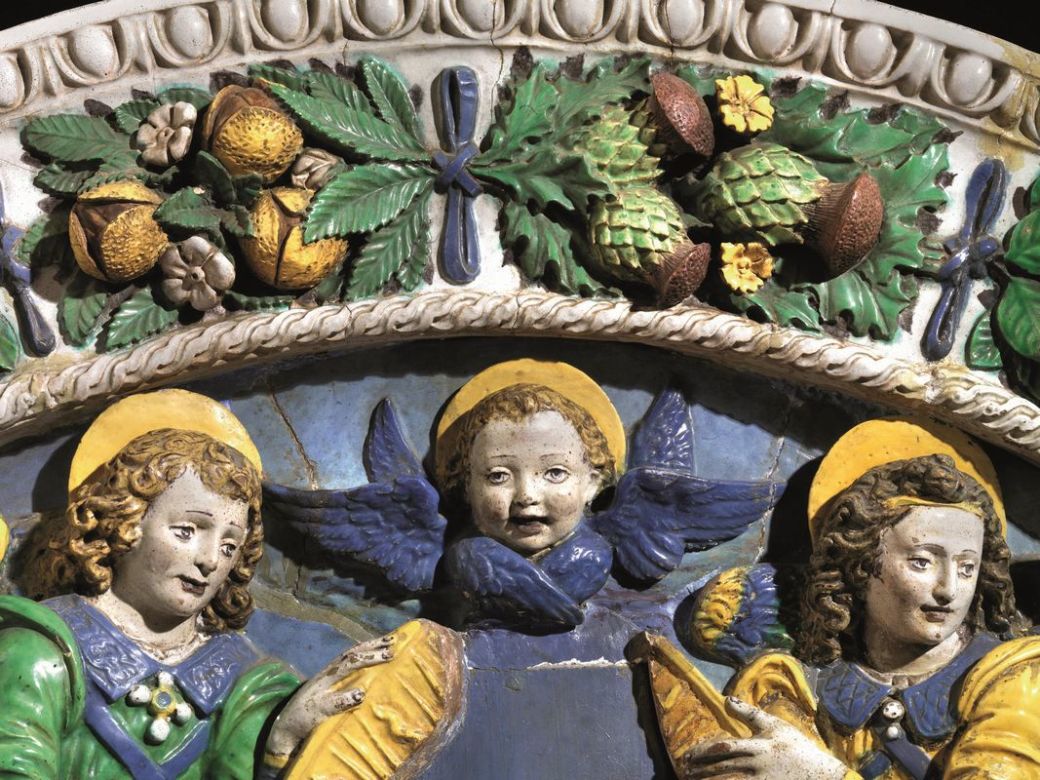On the trail of the Della Robbia in Tuscany
Visitors will delight in discovering an ancient local art form that’s truly unique. Glazed polychrome terracotta is linked to a single family
Here’s an itinerary spotlighting the loveliest roads in Tuscany, which touches upon the region’s mostfamous sites without neglecting the territory’s more hidden magical spots. Visitors will delight in discovering an ancient local art form that’s truly unique. Glazed polychrome terracotta is linked to a single family, theDella Robbia clan, undisputed protagonists of the Renaissance.
LUCA DELLA ROBBIA
The artist credited for having invented this art form is Luca Della Robbia. Born in Florence in 1399, he was a sculptor, goldsmith and ceramist. Luca began his career in Brunelleschi’s workshop, where Donatello also worked. From the latter, Della Robbia learned the basics he’d need for perfecting the technique he later developed, giving rise to masterpieces like The Visitation in Pistoia’s Church of San Giovanni Fuorcivitas, the lunette in Pistoia’s Cathedral depicting the Madonna and Child with Angels.
 Luca Della Robbia, Resurrection, Cathedral of Santa Maria del Fiore
Luca Della Robbia, Resurrection, Cathedral of Santa Maria del Fiore There are the festoons decorating the Church of Santa Maria dell’Impruneta (Florence) and the Madonna with Child in Sant’Andrea at Palaia and another lovely Madonna and Child in Santa Felicita in Florence. During a trip to the Renaissance capital, you can’t miss a visit to Filippo Brunelleschi’s Pazzi Chapel in the Church of Santa Croce, where you can admire the decorations that Luca created in accordance with his master. In reality, his polychrome technique was mostly limited to the obsessive use of blue, white and ivory, which became the workshop’s trademark-of-sorts, providing certain parameters that allowed for recognition.
ANDREA DELLA ROBBIA
Luca’s nephew Andrea (1435-1525) took on the responsibility of continuing his uncle’s work, developing his techniques and introducing innovations into the workshop that would bring about the production of terracottaon a proto-industrial level. His Madonnas have little to envy of the airy beauties of Filippo Lippi orBotticelli’s majestic ladies. This factor becomes quite apparent in the Church del Santuario della Verna(Arezzo) and in the Country Church of Santa Fiora, on the Amiata; the same is true in Montepulciano, in the Church of San Bernardo and the Duomo.
 Andrea della Robbia, Ospedale degli Innocenti, Firenze
Andrea della Robbia, Ospedale degli Innocenti, FirenzeThen, there are terracotta works like those at the Hospital of the Innocents in Piazza della Santissima Annunziata in Florence. His works are also hosted in the churches of Radicofani, Sant’Agata and San Pietro Apostolo and in the Convent of Vallombrosa, where there’s a noteworthy Madonna and Child. Likewise, in Pieve Santo Stefano, the Church of San Francesco hosts a tell-tale Assumption. In Bibbiena’s Church of San Lorenzo, visitors can admire his Pieta and Nativity. Meanwhile, in Anghiari, the Church of Santa Maria delle Grazie hosts a Madonna of Mercy. Next, there Andrea’s beautiful tabernacles like the one in the cathedral dedicated to San Giovanni Evangelista in San Sepolcro. And we can’t neglect mentioning the Tempietto del Latte di Maria (The temple of Mary’s milk), which is currently protected by the Colligiata di San Lorenzo Museum.
GIOVANNI DELLA ROBBIA
Yellow, green and burnt Siena later became part of the Della Robbia workshop which employed Andrea’s five male children (he fathered twelve in all).
 Giovanni della Robbia
Giovanni della Robbia They followed in their father’s footsteps, yet the backgrounds of their works became naturalistic with increasingly complex scenes as one can perceive especially in Giovanni’s works hosted in Volterra’s Church of San Girolamo or Cerreto Giudi’s Church of San Leonardo, or on the walls of the Abbey of Monte Oliveto Maggiore (Siena) as well as in Poggibonsi’s San Luchese Church. His splendid terracotta heads face the monk’s cloister in Certosa del Galluzzo(Florence) and his Madonna delle Querce (Madonna of the Oaks) can be appreciated in Montepulciano. With Girolamo and Luca (the younger), the Della Robbia clan moved to France and this art form left Florence, Via Guelfa and Tuscany…









